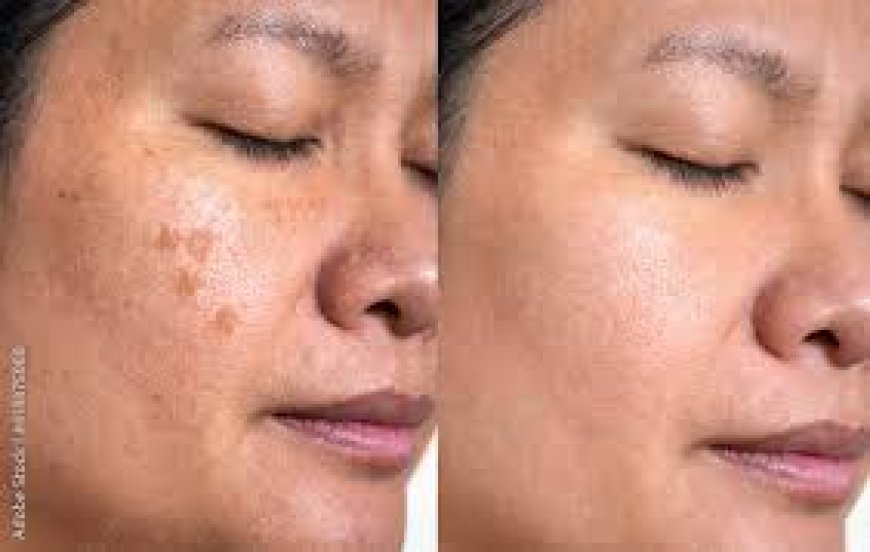How much does laser treatment for dark spots cost?

Introduction
When dark spots appear on the skin—whether from sun exposure, aging, acne, or hormonal changes—it can be frustrating and sometimes affect one’s confidence. Thankfully, laser treatment has become a popular option to help reduce or even eliminate these blemishes. But one common question people ask before booking an appointment is: how much does laser treatment for dark spots cost? It’s a fair question because cost often plays a big role in whether someone moves forward with treatment or looks for other alternatives. Let’s break it down together.
Understanding Laser Treatment for Dark Spots
laser for dark spots uses targeted light energy to penetrate the skin and break up pigmentation, allowing the body to naturally remove the unwanted pigment over time. It’s a non-invasive, relatively quick procedure performed by dermatologists or licensed skincare professionals. Over time, and depending on the type of laser used, dark spots begin to fade or disappear altogether. Laser therapy is considered effective for different types of pigmentation, including sun spots, melasma, and post-inflammatory hyperpigmentation.
Factors That Influence the Cost
The cost of laser treatment isn’t a one-size-fits-all answer. There are several key factors that play into the final price. The first and perhaps most significant is the size and number of the dark spots. If someone has just one small spot, the cost may be on the lower end. However, if multiple areas need treatment or the pigmentation is widespread, that could require more sessions and a more powerful laser device, increasing the total price.
The type of laser used also plays a big role. Some lasers are more advanced and cost more to operate. Then, there’s the experience level of the provider. An established, board-certified dermatologist in a large city is likely to charge more than a new clinic or technician in a smaller town. Another subtle but important factor is your skin type—certain skin tones require specialized care to avoid side effects, which may impact the choice of laser and overall treatment approach.
Average Cost Range in the U.S.
So, what can you actually expect to pay for laser treatment to remove dark spots? In most cases, the cost ranges from $150 to $500 per session. For a small area with just a few spots, the price might be closer to the lower end. For larger treatment areas like the face, neck, chest, or hands, the cost can move toward the higher end.
It’s also important to note that multiple sessions are usually needed. One session might show improvement, but for full results, many patients go through 2–5 sessions. So, while one session might only be $200, the full treatment plan could easily add up to $800 or more.
What’s Typically Included in the Price
It’s worth understanding what’s actually included in the quoted price when you go in for a consultation. Most clinics include the laser session itself and a brief pre-treatment evaluation. In some cases, clinics may offer a package that covers post-treatment care like healing creams, sunscreen recommendations, or follow-up appointments. However, not all clinics include these extras, and sometimes you may need to purchase them separately.
Always ask your provider for a clear breakdown of what’s included before starting treatment. This will help you avoid surprises later on.
Geographic Influence on Price
Where you live can have a surprisingly big effect on the cost of laser treatments. Urban areas with a higher cost of living—like New York City, Los Angeles, or Miami—tend to have higher treatment costs compared to rural towns or suburban locations. That’s largely because overhead costs like rent, salaries, and equipment maintenance are more expensive in big cities, and those costs get passed along to the customer.
That said, price isn’t everything. You still want a skilled, reputable provider—even if it means paying a bit more or traveling slightly farther. After all, it’s your skin and your health.
Does Insurance Cover Laser Treatments?
One of the biggest questions people ask is whether their insurance will help cover the cost. In most cases, the answer is no. Laser treatment for dark spots is generally considered a cosmetic procedure, not a medical necessity. That means it’s rarely covered by health insurance plans, even if the pigmentation is causing emotional distress or discomfort.
If you’re unsure, it’s always a good idea to call your insurance company directly and ask. Occasionally, if the pigmentation is linked to a medical issue like a skin disease or injury, there may be some wiggle room for partial coverage—but this is rare.
Multiple Sessions: A Key Pricing Consideration
It’s important not to underestimate the need for multiple sessions when planning your budget. Many people go into their first treatment hoping it’ll be a one-and-done experience. Unfortunately, pigmentation doesn’t always work that way. The skin may react differently than expected, and deeper pigment may take more time to fade. Also, your skin needs time to heal between sessions, so treatments are usually spaced out every 3 to 6 weeks.
This can extend the total cost quite a bit. For example, if you need four sessions at $300 each, you’re looking at $1,200 total. Some clinics offer discounts if you purchase a full package upfront, so it’s worth asking about bundle pricing.
Different Types of Lasers and Their Pricing Impact
The kind of laser used during your treatment significantly influences the final cost. Some of the most common lasers include Q-switched lasers, Fraxel, and Intense Pulsed Light (IPL). Each laser has its own pricing structure, effectiveness, and healing time.
For instance, Q-switched lasers, which are often used for deeper pigmentation, can cost more due to their precision and strength. Fraxel lasers, known for targeting deeper layers of skin and promoting collagen production, also come at a premium. On the other hand, IPL treatments may be slightly more affordable, but they might not be suitable for all skin tones or types of dark spots.
Your provider will typically recommend the most suitable laser based on your skin tone, the depth of pigmentation, and your desired results. It’s always a good idea to ask why a particular laser is being used and how it affects the cost.
Comparing Laser Treatment to Other Options
While laser treatment is considered one of the most effective methods for dealing with dark spots, it’s not the only option. Some people opt for chemical peels, microneedling, prescription creams, or over-the-counter brightening products. These alternatives can be more affordable initially, but they often require more time and consistency to see noticeable results.
Compared to these options, laser treatment usually offers faster, more dramatic improvements. However, the higher upfront cost might not be feasible for everyone. Some patients try more affordable methods first and turn to laser treatment if other approaches don’t deliver the desired results.
Is Laser Treatment Worth the Investment?
The answer to this depends on your skin goals, your budget, and how quickly you want to see results. For many people, the boost in confidence from having clear, even-toned skin is absolutely worth the cost. The convenience of shorter recovery times, faster results, and long-term benefits makes it a popular choice among both men and women.
That said, it’s important to have realistic expectations. Laser treatment isn’t magic—it may not completely erase every spot, and maintenance may be required later on. Always consult a licensed dermatologist to understand what outcomes you can reasonably expect before committing to the treatment.
Final Thoughts
Laser treatment for dark spots can be a game-changer, especially for those struggling with pigmentation that resists creams or serums. But with prices ranging from a few hundred to over a thousand dollars, it’s important to plan carefully. Think about how many sessions you’ll need, what type of laser is best for your skin, and whether you’re comfortable making that financial investment.
Most importantly, choose a provider you trust. A knowledgeable dermatologist or technician will not only offer transparent pricing but also make sure your skin is treated with the care it deserves. At the end of the day, it’s not just about cost—it’s about confidence, safety, and getting the results you’re looking for.








































































![https //g.co/recover for help [1-866-719-1006]](https://newsquo.com/uploads/images/202506/image_430x256_684949454da3e.jpg)

























![[PATREON EXCLUSIVE] The Power of No: How to Say It, Mean It, and Lead with It](https://tpgblog.com/wp-content/uploads/2025/06/just-say-no.jpg?#)





















































